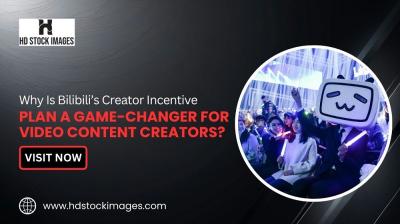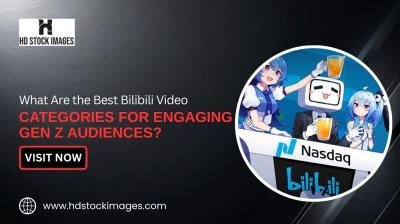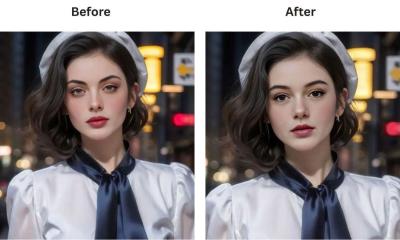Creating engaging LinkedIn posts is essential in today’s professional landscape. With over 900 million users, LinkedIn is not just a platform for job seekers—it’s a bustling hub for networking, sharing insights, and showcasing your expertise. Whether you're a marketing professional, a job seeker, or a business owner, crafting the right posts can significantly enhance your online presence. Let's dive into how you can make your
Why Posting on LinkedIn Matters

So, you're probably wondering, "Why should I even bother posting on LinkedIn?" Well, here are several compelling reasons:
- Build Your Personal Brand: Regularly sharing posts establishes you as a thought leader in your industry. It gives you a platform to showcase your expertise and insights, helping you to be recognized for what you know.
- Networking Opportunities: Engaging posts can attract the attention of potential employers, clients, or collaborators. Each post is a chance to connect with like-minded professionals who share your interests.
- Knowledge Sharing: LinkedIn is a place for learning. By posting valuable content, you contribute to the community and provide your audience with insights that can help them grow in their careers.
- Engagement and Interaction: The more you post, the more interaction you'll receive. Comments and shares can lead to fruitful discussions, expanding your network even further.
- Stay Relevant: The professional world is always shifting. By contributing to conversations around industry trends, you demonstrate that you are active and aware of the latest developments.
Now, let’s break down a couple of these points further:
1. Build Your Personal Brand
Your personal brand is essentially your reputation in the professional world. When you consistently share insightful, relevant, and engaging posts, you’re not just contributing to conversations; you're also curating your image. Every post is an opportunity to reinforce your brand identity—one that aligns with your professional goals and aspirations.
2. Networking Opportunities
Networking is one of the most powerful aspects of LinkedIn. Engaging posts can go viral within your professional community, dramatically expanding your reach. This can lead to new connections, job opportunities, or partnerships you never thought possible. Remember, your next big opportunity might be just one post away!
In conclusion, posting on LinkedIn is far more than just sharing updates; it’s a strategic approach to enhance your professional profile, connect with others, and contribute valuable insights into your industry. So, don’t hesitate—get out there and start sharing your thoughts with the LinkedIn community!
Also Read This: How to Put a Resume on LinkedIn: Uploading and Showcasing Your Resume on LinkedIn
3. Preparing Your Content for LinkedIn
Before you hit that “post” button on LinkedIn, it’s essential to make sure your content is well-prepared. This is where the magic happens! To craft engaging posts that capture attention, you’ll want to focus on a few key areas:
- Know Your Audience: Understanding who your audience is will guide the tone and content of your posts. Are they industry professionals, job seekers, or aspiring entrepreneurs? Knowing your audience can help shape your message.
- Clear Objective: What do you want to achieve with your post? Are you looking to spark discussion, share knowledge, or promote a service? Having a clear goal will give your content direction.
- Structure Your Post: A well-structured post is easier to read and more engaging. Consider using short paragraphs, bullet points, or even numbered lists to break down complex information. This makes it visually appealing and digestible. Here's a quick structure to follow:
| Section | Description |
|---|---|
| Hook | Start with a catchy sentence or question to grab attention. |
| Value | Provide meaningful insights or tips that your audience will find useful. |
| Call to Action | Encourage engagement by asking readers to comment or share their thoughts. |
Additionally, don't forget about the power of visuals! Incorporating images, videos, or infographics can make your post stand out in a crowded feed. A compelling image can often convey a message faster and more effectively than text alone.
Finally, take the time to edit and proofread your content. A post full of typos or grammatical errors can undermine your credibility. Make sure your final draft is polished and professional.
Also Read This: How Do I Change My Email in LinkedIn: A Complete Guide to Updating Your Email Address
4. Step 1: Choosing the Right Topic
Choosing the right topic is fundamental to creating engaging LinkedIn posts. It’s not just about what you want to share but also what your audience wants to see. Here’s how to find the perfect topic:
- Recent Industry Trends: What’s happening in your industry right now? Sharing insights on recent trends or news can position you as a thought leader in your field.
- Common Challenges: Think about common issues your audience faces. Posts that offer solutions or new perspectives on these challenges often resonate well.
- Your Experiences: Share your personal experiences, successes, or even failures. Authentic stories can create a genuine connection with your audience.
Here are some tips for fleshing out your topic further:
- Research: Take some time to browse LinkedIn and see what topics are trending. Read what industry leaders are discussing and see how you can put your own unique spin on similar themes.
- Ask Questions: Consider posing questions to your network. This not only gives you direct feedback on what they want to hear but also encourages engagement in the comments.
- Leverage Polls: LinkedIn’s polling feature is a fantastic way to gauge interest. Create a poll around a specific topic and then elaborate on the results in a subsequent post.
Remember, the key to choosing an engaging topic is ensuring it adds value to your audience. When you focus on their needs and interests, you’re more likely to create content that resonates and encourages interaction.
Also Read This: Studying Acupuncture: What to Expect from the Program
5. Step 2: Crafting an Eye-Catching Headline
Okay, let’s dive into the first step after brainstorming your ideas: the headline. Your headline is *the first impression potential readers will have, and we all know how important first impressions are, right? A strong headline not only attracts attention but also sets the tone for the rest of your post, guiding readers on what to expect.
Here are some tips to make your headline pop:
- Be Clear and Direct: Avoid vague phrases. Your audience should know exactly what to expect. For example, instead of "Ways to Improve Your Skills," try "5 Proven Tips to Boost Your Professional Skills."
- Use Numbers: Posts with numbered lists tend to get more clicks. People love digestible, bite-sized information, so include a number in your headline for better engagement!
- Create Curiosity: A little mystery can go a long way! Ask a question or tease a surprising fact. For instance, "What’s the Secret Behind Top-Performing LinkedIn Posts?" nudges readers to click and find out.
- Incorporate Keywords: Think about what your audience is searching for. Using relevant keywords in your headline can help increase the visibility of your post on LinkedIn.
- Keep it Short: Aim for 5-10 words if possible. Concise headlines are easier to read and remember. Long, complicated headlines can be off-putting.
Once you’ve brainstormed a few headlines, don’t hesitate to test different variations. See which one resonates the most with your audience by using the A/B testing feature on other social platforms or just by asking a few colleagues for their opinion. Remember, the headline is your hook—make it strong!
Also Read This: How to Bold Text in LinkedIn Posts: A Complete Guide
6. Step 3: Writing Your Post Body
Now that you’ve crafted a killer headline, it’s time to dive into the meat of your post—the body! This is where you get to share your thoughts, insights, and knowledge. But just like a good book, you need to keep your readers engaged all the way to the end.
Here’s how to write a captivating post body:
- Start With a Hook: The first few lines should grab attention. Open with a bold statement, an intriguing fact, or a question that resonates with your audience. For instance, "Did you know that 90% of job recruiters use LinkedIn to find candidates?" draws readers in.
- Use Short Paragraphs: Long blocks of text can be overwhelming. Break them up into short, digestible paragraphs—two to three sentences works well.
- Add Personal Touches: Share anecdotes or personal experiences related to your topic. This builds authenticity and helps readers feel connected to you.
- Incorporate Bullet Points or Lists: Whenever possible, use bullet points or numbered lists to make information easier to scan. For instance:
| Tip | Description |
|---|---|
| Be Authentic | Share your unique perspective, because your voice is your strongest asset! |
| Engage with Questions | Ask your readers questions throughout to keep the conversation going. |
| Include a Call to Action | Encourage comments, shares, or even a simple ‘like’. This boosts engagement! |
Remember, the goal here is to provide value to your readers. Keep your content informative, and practical, and above all, relatable. The more your audience feels that they can trust and connect with you, the higher the chances they'll engage with your post and share it with their network.
So go ahead, channel your inner storyteller, and let your personality shine through in your LinkedIn posts. Happy writing!
Also Read This: How to Add Honors and Awards on LinkedIn? Showcasing Your Achievements on Your LinkedIn Profile
7. Step 4: Adding Multimedia Elements
When it comes to creating engaging LinkedIn posts, multimedia elements play a crucial role. While text is important, adding images, videos, or even presentations can take your content to the next level. Let's break down how you can effectively incorporate these elements into your posts.
Why Use Multimedia?
Multimedia makes your post visually appealing, captures attention, and increases the likelihood of interaction. Posts with images or videos tend to get more engagement than those with text alone. Here’s how to leverage different types of multimedia:
- Images: Use high-quality images that are relevant to your content. People are drawn to visuals, so make sure your images are clear and professional. Tools like Canva can help you create eye-catching graphics specifically tailored for LinkedIn.
- Videos: Short videos can be extremely effective. You can share insights, tutorials, or even a simple introduction. Just ensure the video is engaging and provides value to your audience.
- Presentations: Sharing slide decks can be a great way to present in-depth information. Use LinkedIn’s SlideShare feature to upload your materials and share them seamlessly.
- Infographics: If you have statistics or data to share, consider creating an infographic. They’re visually engaging and ensure that your message is easily digestible.
When including multimedia in your posts, always remember to:
- Keep it relevant: Every multimedia element should serve a purpose related to the post's message.
- Optimize for mobile: Ensure your visuals look good on all devices, as many users access LinkedIn from their phones.
- Include captions: Don’t forget to add captions or descriptions for your images and videos to provide context.
By integrating multimedia elements, you not only enhance the visual appeal of your posts but also increase engagement, making your content more shareable and memorable.
Also Read This: How to Get a Resume from LinkedIn: A Guide to Viewing and Downloading
8. Step 5: Utilizing Hashtags Effectively
Hashtags are more than just trendy accessories on LinkedIn; they’re powerful tools that can significantly increase the visibility and reach of your posts. Using hashtags effectively is a skill that can help you connect with the right audience. Here’s how to master them!
Why Hashtags Matter
Hashtags categorize your content and make it easier for users to discover your posts. When you use a hashtag, your content becomes part of that topic's conversation, which can drive more views and engagement. But not all hashtags are created equal. Here’s how to choose and use them wisely:
- Research Trending Hashtags: Before posting, spend some time researching which hashtags are trending in your industry. Tools like Hashtagify or LinkedIn’s own search can show you popular hashtags related to your field.
- Mix Popular and Niche Hashtags: Aim for a combination of widely used hashtags, like #Leadership or #Innovation, along with more niche ones that cater directly to your specific audience, such as #HRTech or #SaaSTips.
- Limit the Number: While it may be tempting to use a ton of hashtags, experts recommend sticking to 3-5 hashtags per post. This keeps your posts looking clean and prevents them from appearing spammy.
- Brand Hashtags: If your company or personal brand has a unique hashtag, be sure to use it. This helps in building a community around your brand and makes it easier for followers to find related posts.
Best Practices for Hashtags:
- Use them at the end of your post to avoid clutter.
- Engage with posts under your chosen hashtags to build connections and increase visibility.
- Update your hashtag strategy regularly to ensure you're reaching your target audience effectively.
Incorporating hashtags effectively into your LinkedIn strategy can open up new opportunities for engagement and networking. By following these tips, you can ensure that your posts reach the right people and spark meaningful conversations.
Also Read This: Everything You Need to Know About LinkedIn Pulse
Step 6: Engaging Your Audience with Questions
When it comes to crafting engaging LinkedIn posts, one of the most effective strategies is to incorporate questions. This isn't just a way to fill space; it’s an invitation for your audience to share their thoughts, experiences, or expertise. By any measure, interacting with your audience is a crucial part of building a thriving community around your content.
So, how do you effectively use questions in your posts? Here are some actionable tips:
- Be Relevant: Match your question to the content you’re sharing. If you’re discussing industry trends, ask for thoughts on those trends. For instance, “What did you think about the changes in the industry this year?”
- Keep It Simple: Avoid convoluted or overly complex questions. A straightforward question encourages more responses. Consider something like “What challenges do you face in your work?”
- Make It Open-Ended: Rather than asking yes/no questions, choose questions that invite elaboration. Instead of “Did you attend the webinar?” try “What were your biggest takeaways from the webinar?”
- Encourage Interaction: Sometimes it helps to explicitly state that you want your audience to share their opinions. Phrases like "I’d love to hear your thoughts!" can be very effective.
Questions can stir conversation in the comments section—the heart of engagement on LinkedIn. Remember to respond to those who comment, fostering a connection and encouraging further discussion. This interaction not only boosts your post's visibility due to LinkedIn’s algorithm favoring engagement, but also establishes your presence as an authority or thought leader in your field.
Incorporating innovative or thought-provoking questions can also set your post apart from the noise, offering value to your audience. Always keep in mind the ultimate goal: to spark a healthy, meaningful discussion that benefits everyone involved.
Also Read This: Why Can I Only Follow Someone on LinkedIn? Understanding Profile Settings
Step 7: Reviewing and Editing Your Post
After pouring your creativity into your LinkedIn post, it’s easy to rush to hit ‘publish.’ But take a breath—reviewing and editing your post is a crucial step you shouldn’t overlook. Well-edited posts not only boost your credibility but also make your content more enjoyable and accessible for your audience. Here’s how to refine your work:
1. Check for Clarity: Read through your post and ask yourself if the message is clear. Could someone unfamiliar with your topic easily grasp what you’re saying? If not, rephrase sentences or simplify any jargon.
2. Look for Grammatical Errors: Spelling mistakes or grammatical errors can undermine your message. Tools like Grammarly or Hemingway can help catch those pesky issues, but a manual read-through is always a wise idea.
3. Review Formatting: LinkedIn favors readability. Make sure your paragraphs are broken up into digestible chunks. Use bullet points or numbered lists (like we did here) to highlight key ideas when applicable. A well-formatted post is visually appealing and easier to read.
4. Confirm Your Links: If you included any links, ensure they work correctly and direct to the intended destination. There’s nothing worse than sending your audience to a dead link.
5. Ask for Feedback: If you're part of any writing or professional groups, consider sharing your draft for feedback. A fresh set of eyes can provide valuable insights and catch mistakes you may have overlooked.
Taking these steps seriously can transform a good post into a great one. Not only does it help in catching any errors, but it also allows you some extra time to reflect on your content and ensure it’s engaging and informative for your audience. Remember, a little extra effort in reviewing pays off significantly when you start to see more engagement and interaction on your LinkedIn posts!
Also Read This: What Does 'Actively Recruiting' Mean on LinkedIn? How It Impacts Job Searches
Step 8: Scheduling or Publishing Your Post
Now that you’ve crafted an engaging LinkedIn post, it’s time to think about when and how to publish it. This step is crucial because the timing of your post can significantly affect its reach and engagement.
Scheduling vs. Immediate Publishing
First, let’s talk about your options. You can either publish your post immediately or schedule it for a later time. Each approach has its advantages:
- Publishing Immediately: This option is great if you have timely content that you want to share right away. For example, if you're discussing a recent industry development or attending an event, immediacy is key.
- Scheduling: This is where the magic of planning comes in. Scheduling allows you to choose the optimal time for your audience to see your post, which is essential if your audience spans multiple time zones. Plus, it frees up your time!
Research Your Audience
To determine the best time for your post, consider your target audience’s activity patterns on LinkedIn. According to various studies, the best times to post on LinkedIn are:
- Tuesday through Thursday
- Between 8 AM - 10 AM and 4 PM - 6 PM
These time slots align with typical business hours, so you’re more likely to catch your audience during their breaks or when they’re wrapping up the day. But remember, it's essential to test different times to find what works best for your specific audience.
Tools for Scheduling
If you choose to schedule your posts, there are several tools you can use:
- Buffer: A user-friendly tool that allows you to schedule posts across multiple social media platforms, including LinkedIn.
- Hootsuite: A powerful social media management tool that provides advanced analytics to help you fine-tune your posting schedules.
- LinkedIn’s Native Scheduler: If you’re using LinkedIn’s own features, it has an option to schedule posts directly.
Once you’ve decided the timing and method for publishing, you can hit that “post” button or set the schedule. Congratulations—you’re one step closer to engaging with your audience!
Also Read This: How to Make a Post on LinkedIn
Promoting Your LinkedIn Post
Congratulations on publishing your LinkedIn post! However, just hitting publish doesn’t guarantee views, likes, or comments. You need to actively promote it to maximize its reach and impact. Here’s how you can do just that!
1. Engage Your Network
First things first, engage with your existing network about your post. A simple way to do this is:
- Tagging Relevant People: If your post includes insights from others or references specific companies, tag those individuals or organizations. They’ll likely appreciate the mention and may engage with your post, extending its reach.
- Sharing in Groups: If you’re part of any LinkedIn groups related to your post's content, share it there. Just ensure that the content is valuable and relevant to group members.
2. Utilize Hashtags
Using the right hashtags can amplify your post’s visibility, allowing it to be discovered by users who follow those hashtags. Here are some tips:
- Use a mix of popular and niche hashtags. While popular tags have a larger reach, niche tags can attract a more targeted audience.
- Aim for 3-5 hashtags to avoid cluttering your post.
3. Cross-Promotion
Don’t hesitate to promote your LinkedIn content on other platforms like Twitter, Facebook, or your personal blog. You can say something like:
“Just published a new post on LinkedIn about [topic]. Would love your thoughts!”
4. Encourage Discussions
A great way to drive engagement is to encourage discussions. Ask open-ended questions at the end of your post. For example:
“What are your thoughts on this topic? Have you experienced something similar?”
By prompting your audience to share their experiences, you increase the likelihood of comments and shares.
5. Track Engagement
Finally, keep track of how your post performs. LinkedIn provides analytics that shows you impressions, likes, comments, and shares. Use this data to learn what resonates with your audience for future posts.
In summary, promoting your LinkedIn post requires a proactive approach. By engaging your network, leveraging hashtags, cross-promoting, encouraging discussions, and tracking performance, you’ll significantly enhance your post's visibility and engagement. Happy posting!
Conclusion: Enhancing Your LinkedIn Presence
In today's competitive job market and digital landscape, having a strong LinkedIn presence is not just beneficial*—it's essential. By following the strategies outlined in this guide, you can create engaging, impactful posts that resonate with your audience. To summarize, here are key takeaways to enhance your LinkedIn presence:
- Know Your Audience: Tailor your content to what your connections find valuable.
- Be Authentic: Share personal experiences and insights that reflect your professional journey.
- Use Visuals: Incorporate images, videos, or infographics to make your posts visually appealing.
- Engage Regularly: Consistency is key—post regularly to stay on top of your audience's minds.
- Encourage Interaction: Ask questions or seek opinions to spark conversation and engagement.
Additionally, consider these tools and techniques:
| Tool | Purpose |
|---|---|
| Canva | Create engaging visuals and graphics |
| Buffer | Schedule posts for consistent engagement |
| LinkedIn Analytics | Monitor post performance and audience engagement |
By actively applying these principles and tools, you will not only enhance your visibility but also build a meaningful network that can lead to valuable professional opportunities. Remember, your LinkedIn profile is your online brand—make it captivating!
 admin
admin








